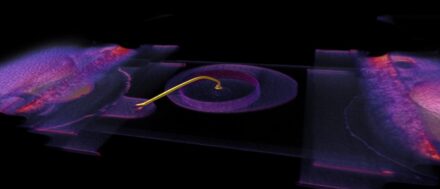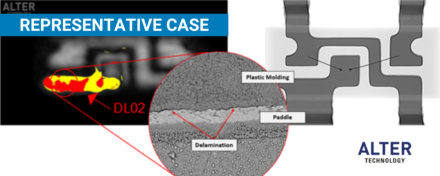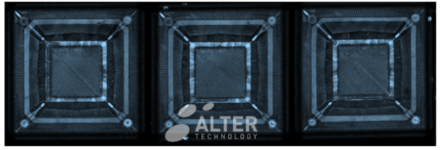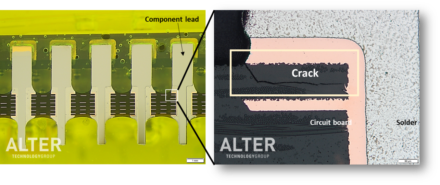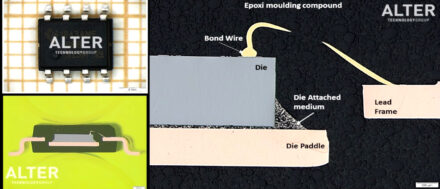

Cross Sectioning for 1553 Transceivers
The cross-sectioning process provides access to the device internal structure, its materials and design. Electronics components are often subjected to cross-sectioning to detect the defects that could not be found using other testing techniques. Cross-sectioning typically involves three discrete steps: mounting the sample in a block of epoxy resin to form the specimen, grinding or cutting the specimen and finally polishing the exposed surface. >> Read more
EEE Parts Results Page
Cross Sectioning for 1553 Transceivers
The cross-sectioning process provides access to the device internal structure, its materials and design. Electronics components are often subjected to cross-sectioning to detect the defects that could not be found using other testing techniques. Cross-sectioning typically involves three discrete steps: mounting the sample in a block of epoxy resin to form the specimen, grinding or cutting the specimen and finally polishing the exposed surface. >> Read more
EEE Parts Results Page
907 results found for 1553/Communication-Interface/Microcircuits
Part reference
Quality level / QPL
Package
Protocol Compatible
Type
TID (krads)
SEE (MeV/mg/cm2)
Number of Channels
Unit price
Lead time
QML H
Not qualified
QPDSIS-38534
Through Hole Mount
CDIP-36
Transceiver
2
QML H
Not qualified
QPDSIS-38534
Through Hole Mount
CDIP-36
Transceiver
2
QML H
Qualified
QPDSIS-38534
Through Hole Mount
CDIP-36
Driver/Receiver
2
QML H
Qualified
QPDSIS-38534
Through Hole Mount
Hybrid DIP-24
Driver/Receiver
1
QML K
Qualified
QPDSIS-38534
Surface Mount
CFP-36
Transceiver
2
QML H
Qualified
QPDSIS-38534
Through Hole Mount
CPGA-100
1553,1760
Transceiver
2
QML H
Qualified
QPDSIS-38534
Surface Mount
CFP-36
Transceiver
2
QML H
Not qualified
QPDSIS-38534
Surface Mount
CFP-36
Transceiver
2
SPACE
Not qualified
NOT LISTED IN QPL
Surface Mount
FP-46
SPACE
Not qualified
NOT LISTED IN QPL
Surface Mount
FP-64
Part validation activities
Cost & Activity Matrix

